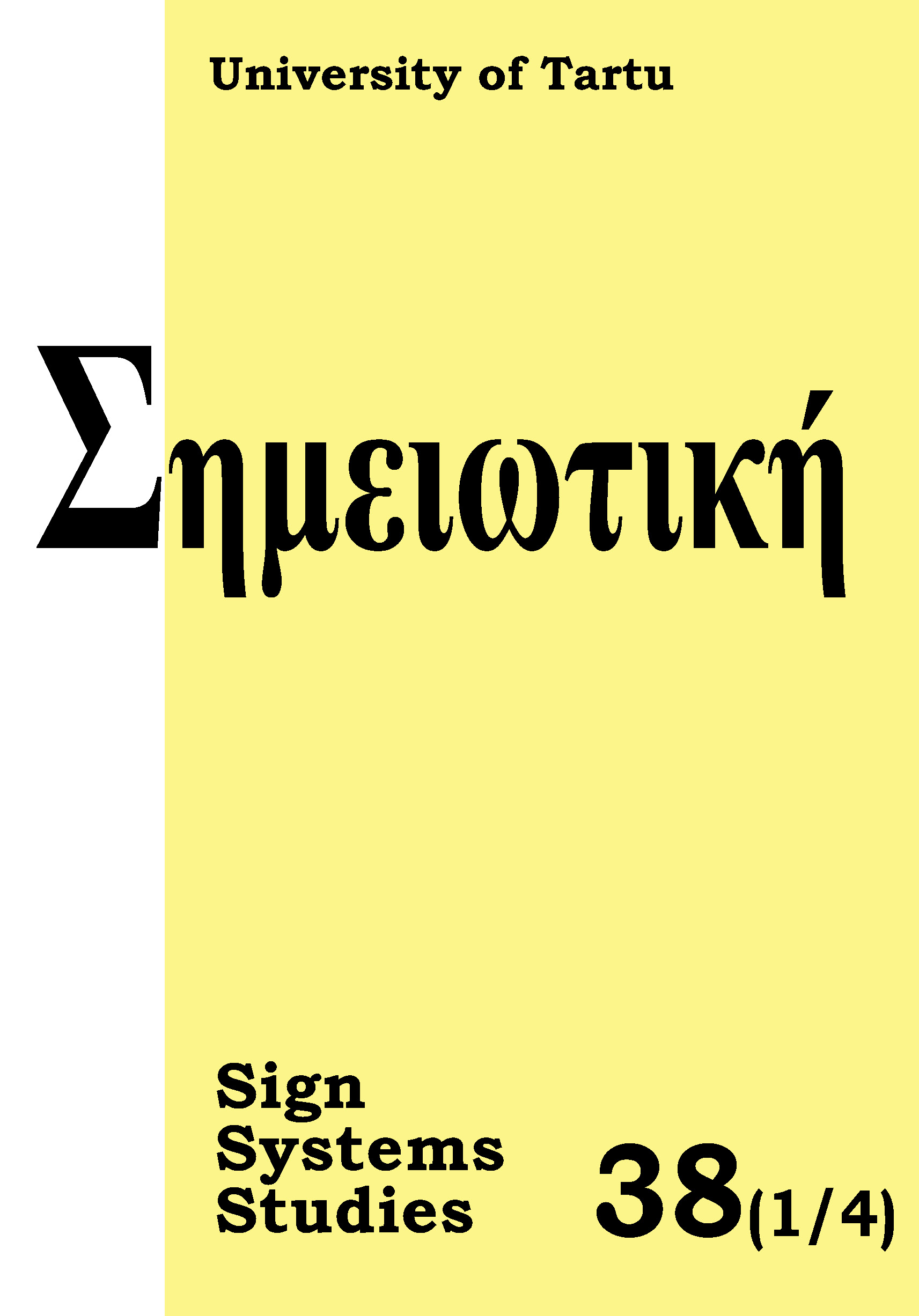Analogical associations in the frame of a “neoclassical” semiotic theory
DOI:
https://doi.org/10.12697/SSS.2010.38.1-4.03Abstract
It has been a long time since the concept of iconic signs was proposed by C. S. Peirce. From that time on, we have been increasingly realizing that semiotic systems are for the most part established just on some type of similarity. But the more we see the sphere of analogical signification expanding its realm, the more we become aware of how inadequate is the notion of a simple relationship connecting locally a physical object with a second object, or with a mental entity. There is, on the other hand, the more refined theory of sign conceived by Ferdinand de Saussure, but this theory, by its very definition, addresses a restricted domain, and definitely does not include the field of those signs which rest on analogical associations. The main purpose of this article is then to show how the more polished Saussurean model can act as a starting point for a general restatement, primarily intended to embrace the signs that rest on an analogical basis. We may so speak of a “neoclassical”, innovative semiotic theory, able to join the latest “sociosemiotic” approach with the most precious foundations of our discipline.Downloads
Download data is not yet available.
Downloads
Published
2010-12-31
How to Cite
Ferraro, G. (2010). Analogical associations in the frame of a “neoclassical” semiotic theory. Sign Systems Studies, 38(1/4), 67–90. https://doi.org/10.12697/SSS.2010.38.1-4.03
Issue
Section
Articles


